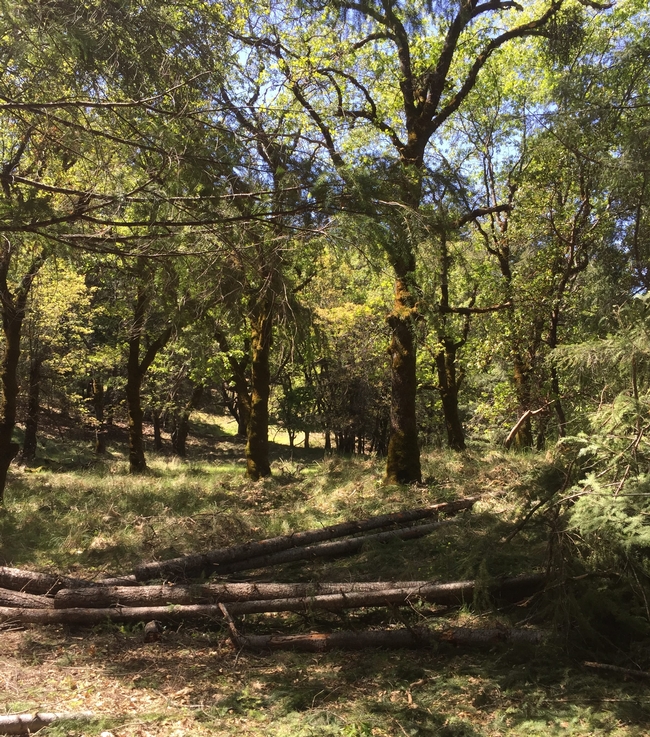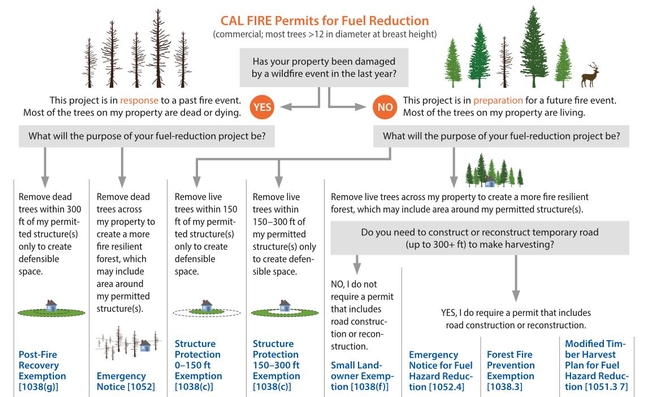
Posts Tagged: guide
How to Find a Praying Mantis in the Wild
If you're trying to find a praying mantis in the wild, go where the food source is. Sounds pretty easy, right? But oh, they're camouflaged. They lie in wait, as ambush predators, and strike. Now you see the predator, now you don't. Where did it go? "Observations of most species tend to peak in...
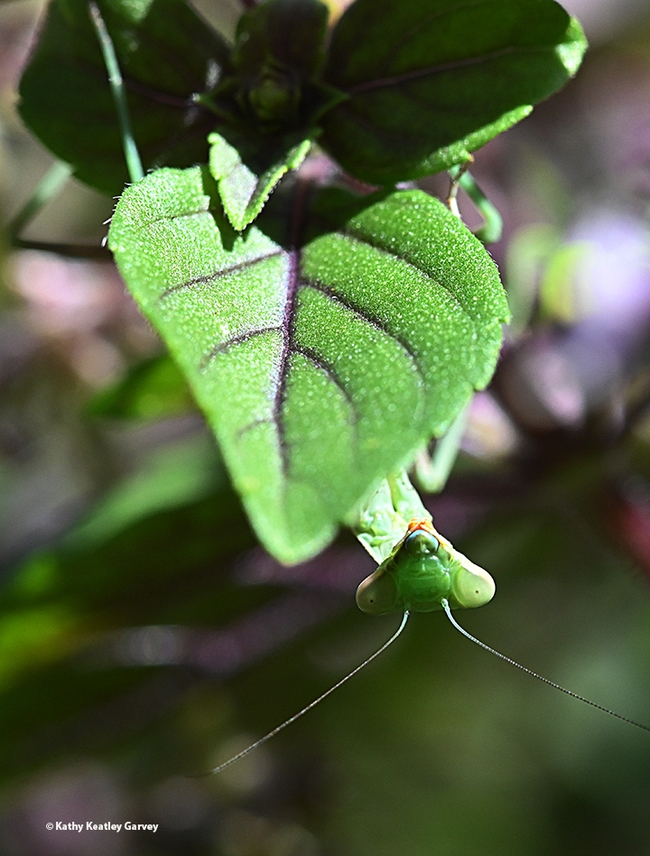
A praying mantis, a Stagmomantis limbata, hides beneath an African blue basil leaf in a Vacaville pollinator garden. (Photo by Kathy Keatley Garvey)
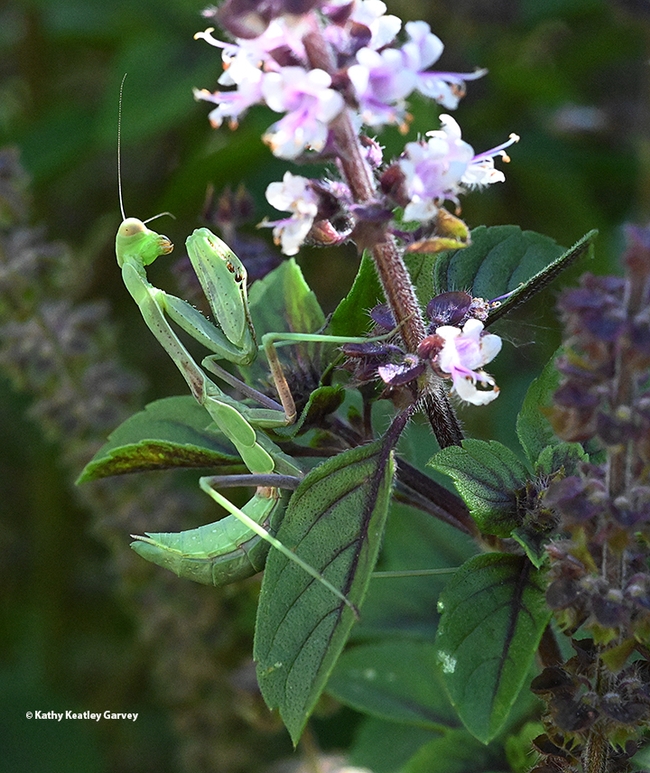
This praying mantis, a Stagmomantis limbata, hanging out in the African blue basil leaf, scouts for bees. (Photo by Kathy Keatley Garvey)
Free wildfire publication simplifies understanding fuel-reduction permits on private land
UCCE forest advisor helps landowners, community groups determine best project options
As Californians prepare for another year of drought and an anticipated intense fire season, landowners and organizations across California have been working to reduce forest fuels – flammable woody material – that can endanger their properties and communities.
For many of them, however, their urgent efforts hit a sizable speed bump: a massive rulebook that describes, amid a thicket of other information, the permits required before people can treat or remove fuels – as well as a litany of attached requirements, restrictions and stipulations.
“The California Forest Practice Rules are 410 pages, in font size 6,” said Yana Valachovic, UC Cooperative Extension forest advisor for Humboldt and Del Norte counties and registered professional forester. “Trying to figure out what permit vehicles make sense in the rulebook is not easy even for the experienced professional forester.”
To assist private landowners and community groups in deciphering the rules and determining their most cost-effective options, Valachovic took the lead in writing a new guide, “Planning and Permitting Forest Fuel-Reduction Projects on Private Lands in California,” available as a free resource in the UC Agriculture and Natural Resources catalog.
“We tried to create a system where all the permits are laid out side-by-side, and put in a decision tree framework to help make it easier,” said Valachovic, highlighting the publication's tables that break down the project goals and parameters a permit applicant should think about when weighing their choices.
Considerations include whether the project is pre- or post-wildfire, the location and dimensions of trees targeted for removal, the conditions of the site before and after the project, potential time limits, commercial options, and, crucially, budget constraints – given that the permitting process could comprise up to one-third of total project costs.
A primer for planning and preparation
Chris Curtis, the unit forester for CAL FIRE's Humboldt-Del Norte Unit, said that he and his colleagues are grateful for this new tool and plan to use it as an “over the counter” handout for community members. He added that the charts summarizing timber-harvesting regulations and possible funding sources are especially helpful.
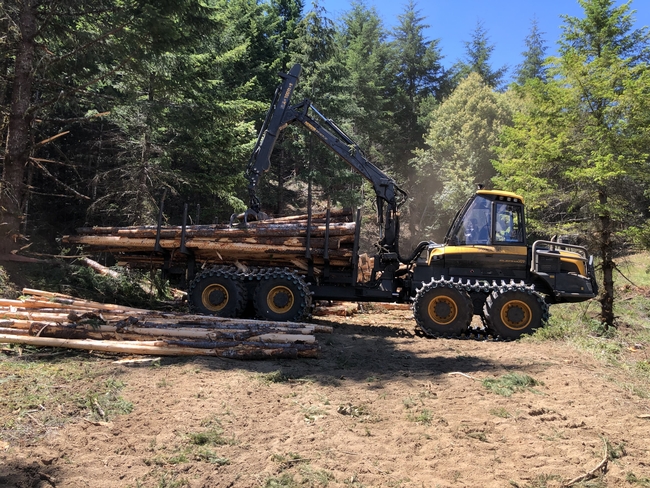
The publication helps prepare the landowner or community entity (such as Resource Conservation Districts, Fire Safe Councils or other concerned groups) for the types of questions that might come up in preliminary planning conversations with a registered professional forester or RPF.
Just as a homeowner would talk with a contractor before tackling a construction project, landowners and community groups must consult with an RPF, Valachovic said. RPFs have the specialized knowledge of forest practice rules and regulations related to water, air quality and endangered species protections, and the license to file the permitting documents.
“That's what I do in my job: Landowners come to me and we start talking about goals and objectives,” she said. “We start thinking about potential timelines – which goals are short-term, which are long-term – and how we can put an operational plan together to help those landowners achieve their goals.”
Long-term projects, short-term actions
Among the many practical tips outlined in this guide, Valachovic emphasized one in particular: for landowners dipping their toes into fuel reduction for the first time, keep the project “simple and realistic.”
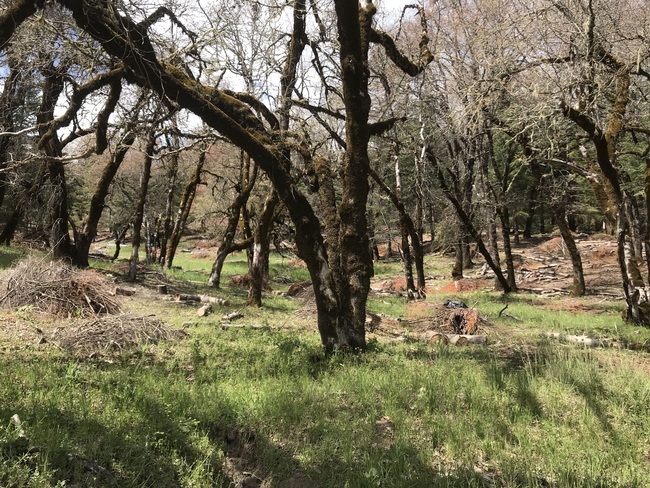
In the short-term, however, Valachovic stressed that the extremely dry conditions across the state make it imperative for Californians to harden their homes, manage the fuels (i.e., landscape plants, stored wood, tall grass, etc.) immediately adjacent to their homes, and devise and review family emergency plans; see UC ANR's Wildfire Preparation page for detailed information and resources.
“There are a lot of immediate actions that people can be doing this year to help mitigate their wildfire risks and prepare for the unexpected,” she said.
In addition to Valachovic, co-authors of “Planning and Permitting Forest Fuel-Reduction Projects on Private Lands in California” are Jared Gerstein of BBW Associates and Brita Goldstein, UCCE staff research associate in Humboldt and Del Norte counties; both are registered professional foresters.
Take a Bug Break--and Bring Along This Book
Don't take a coffee break. Take a bug break. Step into your garden, walk over to a community park, or hike in the wilderness and see what's out there. And take along the newly published, newly revised "The Field Guide to California Insects." It includes more than 600 insect species. Not sure...
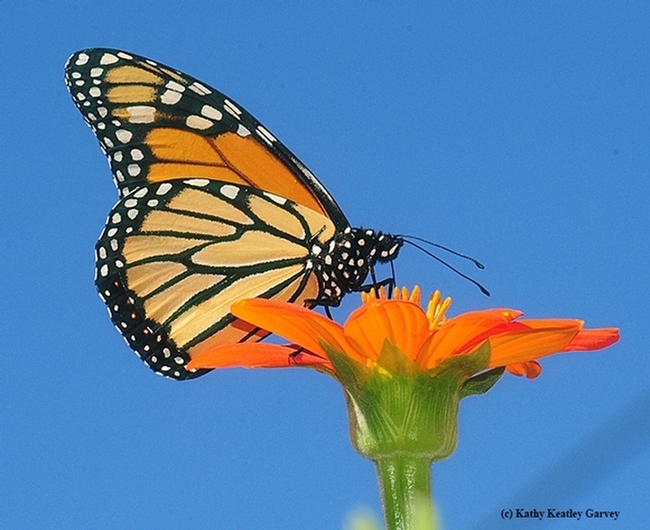
A monarch butterfly, Danaus plexippus, nectaring on a Mexican sunflower, Tithonia rotundifola. (Photo by Kathy Keatley Garvey)
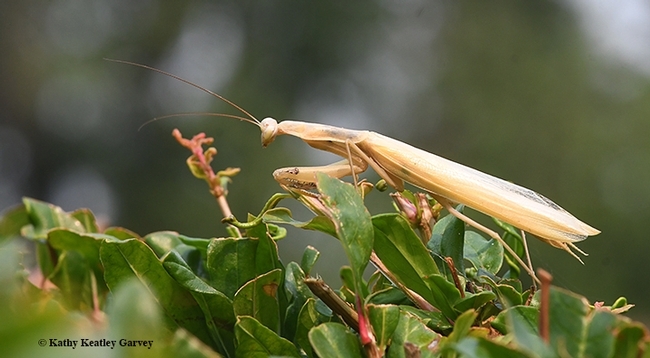
A praying mantis, Mantis religiosa, looking for prey. (Photo by Kathy Keatley Garvey)
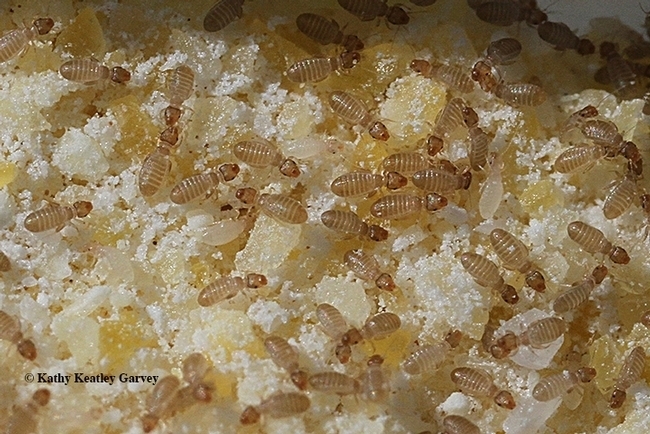
Booklice, Liposcelis bostrychophila, are nearly microscopic (about a millimeter long). You may find them in your cornmeal. (Photo by Kathy Keatley Garvey)
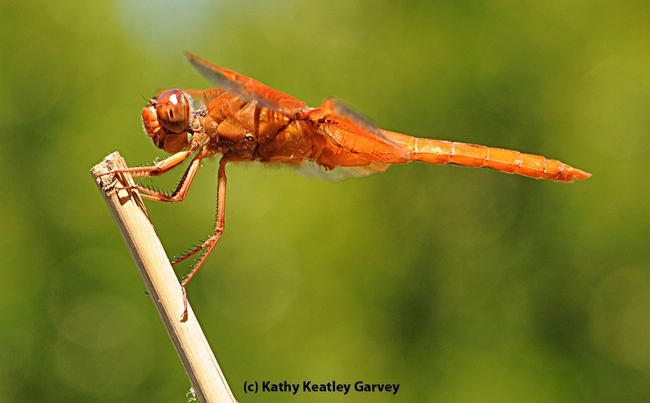
A flameskimmer dragonfly, Libellula saturata, perches on a stake. (Photo by Kathy Keatley Garvey)
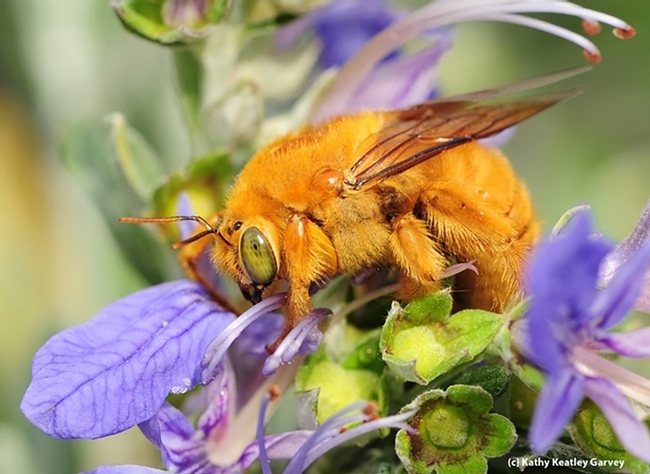
This is the male Valley carpenter bee, Xylocopa sonorina (formerly known as Xylocopa varipuncta). (Photo by Kathy Keatley Garvey)
The Fluttering of Butterflies and Why This 4-H Project Is Important
Bet you've never seen a butterfly like this! The colorful butterfly seemed to flutter from a blanket that Solano County 4-H'er Erica Lull was sewing last Saturday, Jan. 14, at a “Cuddle Me Close” community service project. Erica, 14, a junior leader in the Tremont Countywide 4-H...

This butterfly-themed blanket is the work of Erica Lull for the "Cuddle Me Close" 4-H community service project. (Photo by Kathy Keatley Garvey)
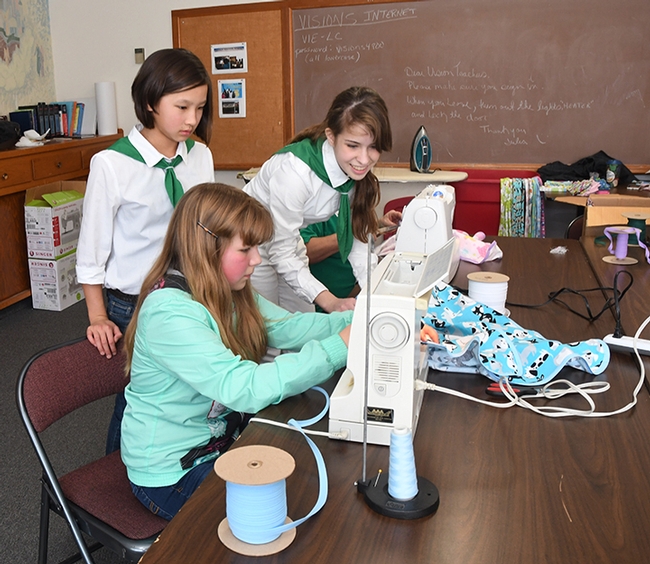
Junior 4-H leader Erica Lull (right, in the back) of the "Cuddle Me Close" project oversees the work of Suisun Valley 4-H Club member Clairese Wright (seated) while Kate Frenkel, also of Suisun Valley 4-H, watches.
All the Way from Down Under
One of the most prominent and distant--as in far away--visitors to the Häagen-Dazs Honey Bee Haven, the half-acre bee friendly garden on Bee Biology Road, UC Davis, was Mark Leech of Launceston, Tasmania, Australia. Leech visited the garden several years ago to research his book,...

This photo of a bee foraging on a zinnia, taken in the Haagen-Dazs Honey Bee Haven, graces the front and back covers of "Bee Friendly: A Planting Guide for European Honeybees and Australia Native Pollinators." (Photo by Kathy Keatley Garvey)

